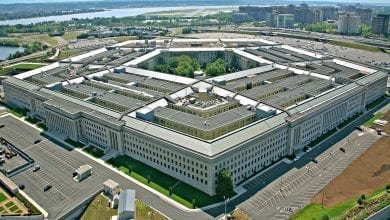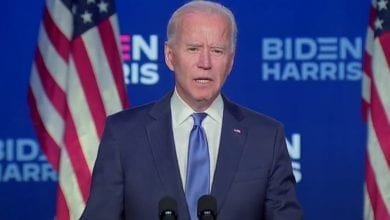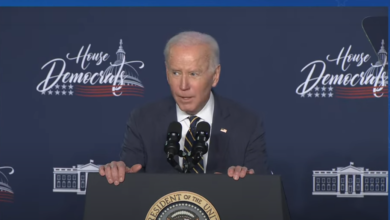Medal of Honor Monday: Army MSgt. Charles Hosking Jr.
Army Master Sgt. Charles E. Hosking Jr. was on his third deployment to Vietnam during his 24th year of service when he was killed in action saving his fellow Special Forces soldiers. He unhesitatingly gave his life for theirs, and for that, he earned the Medal of Honor.
Hosking was born on May 12, 1924, in Ramsey, New Jersey, to Charles Sr. and Luella Hosking. He had a younger brother named Robert, and they both attended Ramsey High School.
According to military records, Hosking ran away from home when he was 16 to join the Canadian Army in Montreal, so he could fight in World War II. His age was eventually discovered, though, and he was sent home.
According to Hosking’s daughter, Gail Hosking Gilberg, the teenaged Hosking left school again in 1942 when he was 17 to join the U.S. Coast Guard, but he was discharged because he had a heart-related issue. Gilberg said a local congressman eventually helped Hosking bypass an Army physical so he could successfully join the service.
Throughout World War II, Hosking served with the famed 82nd Airborne Division in its 509th Parachute Battalion, including during the Battle of the Bulge, where he was wounded in the leg. He was lucky to be alive, though. According to the (Ridgewood, New Jersey) Sunday News newspaper, by the time the battalion disbanded, only 30 men of the initial 1,500 had survived.
At some point, Hosking married his teenage sweetheart, Gloria Walters. They went on to have three daughters and a son.
Military records show Hosking remained in the service through Korea but never deployed to the conflict zone because of serious injuries he suffered during a bazooka training accident. After he recovered, he joined the newly created Special Forces and became a Green Beret. He served as a demolition expert and, after going to language school, became proficient in several languages. At some point, he earned the nickname “The Snake” for his ability to slide in and out of places, according to the Hackensack, New Jersey, newspaper, The Record.
Thanks to Hosking’s proficiency in Vietnamese, he was deployed there in 1961 as a military advisor. When the U.S. began sending combat troops, he was deployed twice more. It was during Hosking’s final deployment with Detachment A-302, Company A of the 5th Special Forces Group that he was killed in action.
On March 21, 1967, Army Sgt. 1st Class-Hosking was serving as a company adviser for the III Corps Civilian Irregular Defense Group Reaction Battalion — basically, a group of South Vietnamese locals who were trained to fight by the Green Berets to react to increasing attacks by the Viet Cong, which were guerilla forces in the south who were fighting for the north. At the time, the company was in the Don Luan District, west of Saigon, about 4 kilometers east of a Special Forces camp. They were waiting to link up with another group of soldiers.
Around noon, Hosking and other Special Forces soldiers detained and questioned a local man who tried to ride past them with a bicycle equipped with mortars. Army records show the man admitted to being a sniper for the Viet Cong, so the group planned to move him to the nearby Special Forces camp.
When Hosking untied the detained man’s hands, the man quickly grabbed a hand grenade from Hosking’s belt, armed it and started running toward Hosking’s company command group — two American and two Vietnamese soldiers who were standing only feet away.
The 42-year-old Hosking knew what was happening immediately, so without thinking of himself, he leapt onto the deranged man’s back. He pulled the man into a bear hug, forcing the grenade against the man’s chest, then wrestled the man to the ground. Hosking’s last act of bravery came when he then covered the man’s body with his own until the grenade detonated. Both men died instantly.
Thanks to Hosking’s selfless act, the four members of the command group suffered injuries but survived the ordeal. They also went on to survive the war.
Eventually, Hosking’s remains were returned to the U.S. He was buried in Valleau Cemetery in Ridgewood, New Jersey. Hosking’s wife said that his mother insisted he be buried there and not in Arlington National Cemetery so she could care for his grave.
On May 23, 1969, Hosking’s family was invited to the White House to receive the Medal of Honor in his stead. During the private ceremony, President Richard M. Nixon placed the medal around the neck of Hosking’s 8-year-old son, Wesley.
Hosking’s sacrifice has not been forgotten. Gilberg, his daughter, wrote a book about his life called “Snake’s Daughter.” A fitness center was named in his honor at Fort Bragg, North Carolina, and in 2000, a monument was dedicated to him at a veterans park in his hometown.
This article is part of a weekly series called “Medal of Honor Monday,” in which we highlight one of the more than 3,500 Medal of Honor recipients who have earned the U.S. military’s highest medal for valor.
Source: Department of Defense
Content created by Conservative Daily News is available for re-publication without charge under the Creative Commons license. Visit our syndication page for details.




